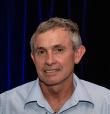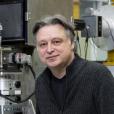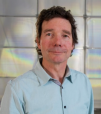Blue Carbon Horizons Team wins Eureka Prize for Environmental Research
Blue Carbon Horizons Team showed coastal wetlands capture more carbon as sea levels rise

Showing 261 - 280 of 774 results
Blue Carbon Horizons Team showed coastal wetlands capture more carbon as sea levels rise

For over 45 years, ANSTO has provided consultancy and process development services to the mining and minerals processing industries in Australia and globally.

ANSTO is proud to host the Shorebirds Competition for the fourth year. This unique environmental poster competition is free to enter and offers over $4000 in prizes (insert link to prizes button) for students and schools!

X-ray fluorescence scanner is a powerful analytical tool for environmental studies.
Sample environments, Data analysis.
Come and discover the world of science at the Australian Synchrotron - book a school tour today.

Radionuclides have been used routinely in medicine for more than 60 years. Nuclear medicine uses radiation to provide information about the functioning of a person's specific organs to diagnose or treat disease. The radionuclides used in medicine have half-lives ranging from a few minutes to several days in order to minimise the radiation dose the patient receives. For three unknown medical radionuclides, students will graph their decay over time, use the graph to calculate their half-life, and determine the identify and use of each radionuclide using background information provided.

ANSTO's Graduate Program develops the next generation of Australian business and science leaders, by providing the best and brightest postgraduate students with a two-year rotation cycle, tailored to match your talents, goals and interests.


In space, without the protection of the magnetosphere, the type and dose of radiation is considerably different to what is naturally experienced on earth. However, it is the secondary particles of lower energies created when galactic and cosmic radiation interacts with shielding that is of concern for astronauts.

In collaboration with the French National Institute of Health and Medical Research (INSERM) and the French International Space Agency (CNES), ANSTO scientists are undertaking research on the radiobiological effects of secondary particles that are created when radiation interacts with the shielding on the International Space Station.

Elemental and trace metal analysis lab is fully equipped with a range of instruments to trace elements and metals in environmental samples.
Best and brightest recognised in 2017 research awards


Stable isotopes are high useful in investigations of environmental samples.

ANSTO signed a cooperation agreement with ITER to enable Australia to engage with and benefit from participation in the world’s largest engineering project to create fusion energy.